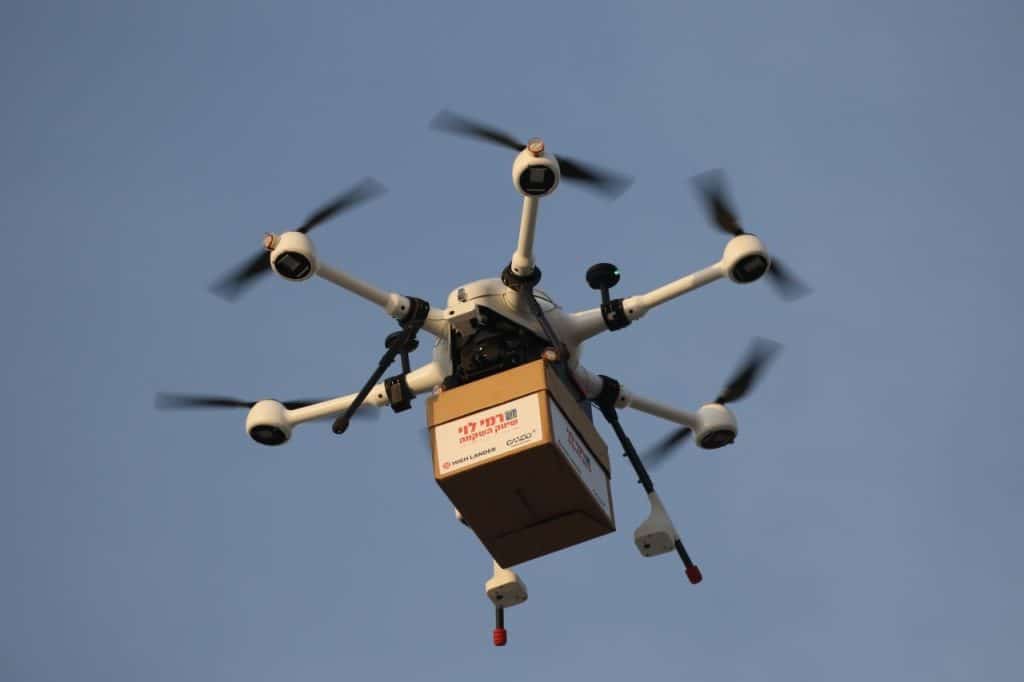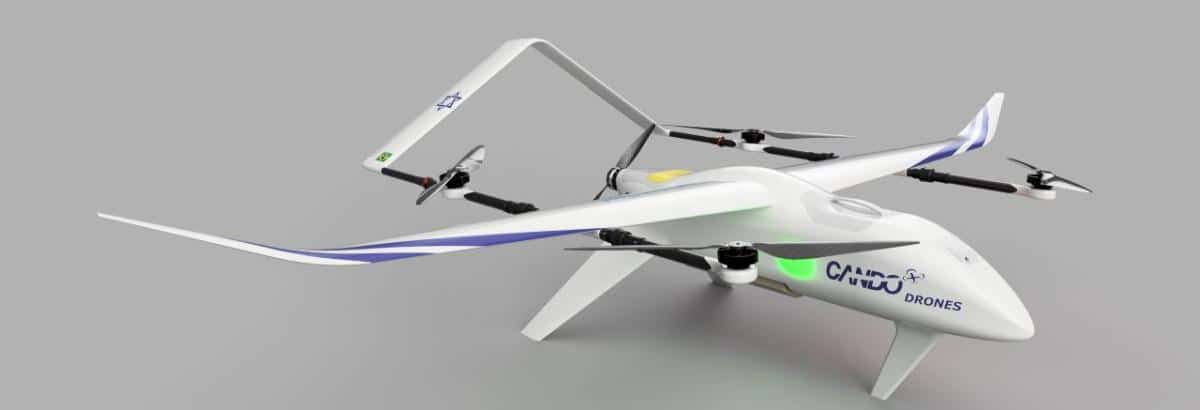What’s New and What’s Next For Speedbird Aero
September 24, 2024 | Akshata –

Safety in the skies remains essential and those who protect and defend it play a vital role. Speedbird Aero aims to make logistics operations safer, faster and more efficient with autonomous drones.
On a recent episode of the Dawn of Autonomy podcast, Speedbird Aero’s CEO, Manoel Coelho and newly appointed Chief Strategy Officer, Veruska Dias, shared what the company has been up to and where they’re headed next.
With over 20 years of experience leading businesses and having steered the commercial departments of three innovative startups, Manoel brings extensive expertise and experience to the table. Veruska, an Aerospace Engineer with 14 years of industry experience, helps to shape industry standards as a member of the Joint Authorities for Rulemaking on Unmanned Systems (JARUS). Read on to learn about their expansion plans, challenges in adoption, Unmanned Traffic Management (UTM), various projects and future goals.
A New Chapter
Speedbird Aero has recently expanded into Europe, with a new headquarters in Portugal. This strategic move follows the company’s success in Brazil, where they have conducted over 27,000 commercial drone missions.
Why Portugal? Dias explained that the company already holds most of its certifications with the National Civil Aviation Agency of Brazil (ANAC) and the shared Portuguese language simplifies the process of aligning these certifications with European standards. Portugal also has strong cultural ties across Europe, the Middle East and Africa (EMEA), as well as the Asia-Pacific (APAC) regions, which makes it an ideal location from which to manage operations. Speedbird’s new office at the Lionesa Business Hub, one of the largest in Portugal, positions it for accelerated growth and an even broader international presence.
As Speedbird Aero enters the European market, it faces the challenge of navigating diverse regulations in each country. Veruska discussed how drone rules in Europe have improved over the past five years, in part due to efforts such as the AW-Drones funded by the Innovation and Networks Executive Agency (INEA), the Single European Sky ATM Research (SESAR) and the SHEPHERD programs led by the European Union Aviation Safety Agency (EASA) that have been harnessing new technologies and accelerated digitalisation to contribute to making the Single European Sky a reality and supporting the rulemaking process for the definition of rules, technical standards and procedures for civilian drones to enable safe and reliable operations in the European Union.
Despite Europe’s progress in developing a common regulatory framework, the next challenge is for each country to tailor these standards to their specific systems. Each country still implements European standards differently. For instance, for Beyond Visual Line of Sight (BVLOS) operations, Germany and Italy are actively testing UTM systems and its integration with ports and airports, while Portugal requires advanced systems to manage airspace and detect non-cooperative aircraft. Detect and avoid (DAA) systems enable operators to sense and avoid other aircraft and obstacles autonomously using sensors, such as radar, acoustic, and visual, to detect and avoid obstacles in the airspace. The main issue here is that many DAA systems available on the market only support cooperative aircraft, so non-cooperative flights – which do not have such systems – pose a big challenge. While more generalized adaptations will be crucial to the success of UTM systems and drone operations across the continent, Speedbird plans to make its mark in the existing structures by implementing new technologies and highly robust products to unlock long-term routine BVLOS commercial drone services in environments of varying complexity, for example, DAA solutions for identifying non-cooperative aircraft, optical systems for GPS-denied contingency navigation, low-cost enhanced connectivity network solutions, and AI for real-time dynamic routing to avoid weather and multimodal traffic management constraints.
Speedbird’s Role in UTM
Speaking of UTM, Coelho highlighted Speedbird Aero’s UTM partnerships with firms like Cando Drones and Highlander, which support operations in complex environments, such as Israel. “We plan to replicate this approach in Brazil and collaborate with additional UTM providers worldwide,” he said.
Speedbird’s focus on connectivity and network prioritization is crucial for effective UTM and helps ensure safe and efficient drone operations globally. Coelho shared details about an upcoming project in the Amazon region. This project, to meet the immediate needs of industry, such as rapid delivery of high-value product samples, and of society, such as emergency response and delivery of essential goods to people in remote locations, is essential. The ability to prioritize critical operations across various networks, such as those for first responders and urgent medical deliveries, is critical, given the heavy helicopter traffic from mining operations in the Amazon. “We had to secure cell phone coverage, Wi-Fi and even satellite communication for our drones,” Coelho said.
Speedbird Aero’s UTM system and DLV-4 VTOL fixed wing and other multi-rotor aircraft will be featured in this complex project. (See this article to learn more about their products). While the DLV-4 is suitable for long-range missions, the multi-rotors provide additional resilience in adverse weather conditions. Speedbird has already successfully used its multi-rotors for missions over 44 kilometers while carrying a 5-kilogram payload and is developing a new product to expand that payload capacity by 10x. This flexibility allows the company to select the most suitable drone based on environmental conditions.
Coelho stressed the continuing need to demonstrate their solutions’ effectiveness and reliability as they enter new markets. This includes the ability to differentiate between legal and potentially illegal drone activities in the airspace. For example, when it comes to drones in Brazil, drug trafficking and terrorism raise significant concerns for local authorities. “We’re currently operating in Brazilian ports, handling cargo ship-to-shore operations. The first question from federal police and other authorities is whether we can provide surveillance,” he noted. For this reason, Speedbird’s UTM solution includes this type of detection and identification capability as part of specific operational services for users in the public and private security and emergency response sectors.
Contributing to Standards
On the topic of identification, Coelho also noted that Brazil continues making progress with Remote Identification (Remote ID), as well as UTM standards to improve air traffic management (ATM) and integrate manned aviation in efficient and effective coordination, even in complex environments such as São Paulo, which has the largest helicopter fleet in the world. The Brazilian Air Force, he said, is developing a national traffic management backbone through a government-industry collaborative project named BR-UTM, similar to global initiatives which have the participation of U.S. companies such as Wing and Zipline. This backbone will support interoperability, so different UTM providers can offer services to detect and manage drones effectively. Speedbird Aero remains at the forefront of these developments.
The company actively collaborates with main national authorities like the Department of Airspace Control (DECEA) which is responsible for the air traffic control and airspace defence and the Brazilian civil aviation authority (ANAC) to define requirements and create standards for UTM system design, implementation and operation, designing prototypes, running tests and preparing pilot projects to demonstrate and validate viable solutions for the commercial implementation of air traffic management for unmanned aircraft in Brazilian airspace. At the same time, Speedbird is developing its own UTM system in order to be a UTM service provider in Brazil once the national traffic management backbone is created and in other countries around the world where the solution can be used as a base and adapted in a modular way to local scenarios and requirements. This type of parallel development offers valuable opportunities for demonstrations and learning for both government and industry. “In my view, this development can proceed in parallel. It is not a competition but an opportunity to test and grow together,” Dias explained.
 Image: Speedbird Aero
Image: Speedbird Aero
Strong Partnerships
Speedbird continues to learn through hands-on projects and invaluable field experience. All of this relies on strong partnerships to achieve company goals. “We cannot do everything by ourselves,” Coelho noted, “which is why Speedbird Aero partners with key firms like Cando Drones and Highlander.”
Cando, a notable operator in Israel, works with Speedbird on technology development to enable BVLOS operations in complex environments, while Highlander, with its experience as a UTM solutions provider, is their chosen partner to work together on developing a new UTM solution and providing such services in Brazil. “We work with other UTM providers, but Highlander was selected intentionally for this project,” Coelho said, citing their capabilities and support. Connectivity is a key factor and systems like Elsight are effective for communication and de-conflicting drone flights. According to Coelho, these systems help with proper management and control of drones.
Their joint experience extends beyond Brazil. In Israel, they have been involved in the national Israeli drone initiative for the past three years, observing the advanced integration of civil aircraft with multiple drone missions. This approach aids in dynamic routing and deconfliction, which is crucial in densely populated areas. Moreover, in this territory where GPS jamming and spoofing attacks occur with high frequency, they jointly develop and test various solutions that increase the technological robustness of products and the security of operations, such as their optical system for GPS-denied contingency navigation.
As for multimodal traffic management solutions, in Singapore, Speedbird’s partnership with Skyports enables them to monitor maritime traffic – creating air routes that avoid unnecessary exposure and interference with this other mode of transportation to reduce operating risk – and to monitor the airspace, avoiding no-fly zones and coordinating with adjacent air traffic.
Over the Horizon
While Speedbird Aero currently focuses on its European expansion, it still seeks to enter the U.S. market. “We are very keen on entering the U.S. market and we continue to work, monitor and stay involved despite the complexities,” Coelho said. “The U.S. has the most complex airspace in the world, so we plan to approach it one step at a time.”
As Speedbird moves onward and upward, it plans to continue taking a pragmatic approach that balances commercial viability with regulatory compliance and community engagement.
To learn more about Speedbird Aero, contact them here.
Learn more from Manoel Coelho & Veruska Dias on the 2024 Dawn of Autonomy podcast.


